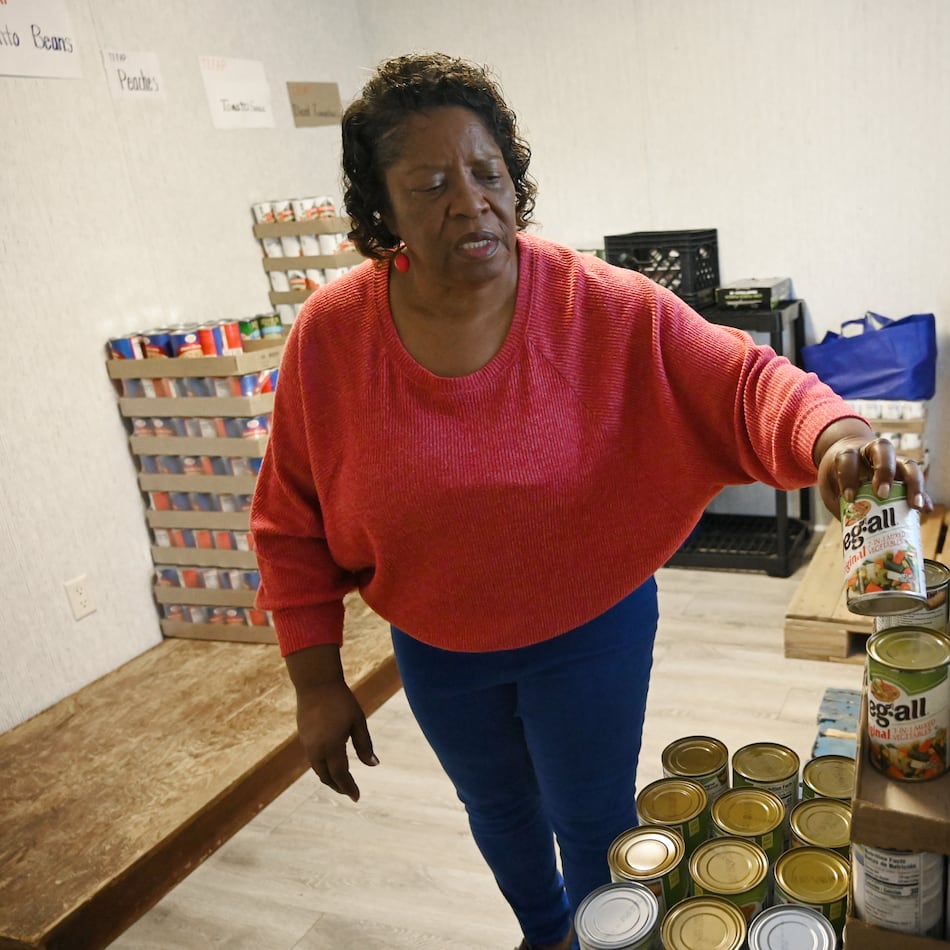SPARTA — Gloria Simmons has spent the last decade fighting hunger in a county where nearly one in two children lack or have uncertain access to adequate food.
Rural Hancock County, about 100 miles southeast of Atlanta, has the highest estimated rate of childhood food insecurity in the nation — about 47%, according to Feeding America’s latest report tracking data from 2023.
“We may not have as many items as we want to, but we do our best with what we do have to offer,” said Simmons, the executive director of the Hancock Helping Hands food pantry.
Addressing food insecurity in Hancock County and across the state is expected to get harder because of changes in Washington, D.C.
The U.S. Department of Agriculture recently canceled an annual survey tracking communities struggling to get enough food, saying in a statement, “these redundant, costly, politicized, and extraneous studies do nothing more than fear monger.”
Simmons said the Trump administration would rather obscure the issue than face it.
“They haven’t looked closely at the communities,” she said. “They haven’t driven around to look at the level of poverty. They haven’t walked through the school systems and looked at the kids and where they are.”
Credit: Hyosub Shin
Credit: Hyosub Shin
The administration didn’t just cancel the survey. It also placed researchers focused on food insecurity on administrative leave.
Additionally, work requirements under President Donald Trump’s new tax and spending law are anticipated to make it harder for adults enrolled in the Supplemental Nutrition Assistance Program, also known as food stamps, to qualify for the program.
Congressional Republicans who back the law say SNAP is poorly managed and discourages people from working.
Food assistance is estimated to be reduced by $69 billion over the next decade, according to the Congressional Budget Office. And 382,000 Georgians could lose SNAP benefits under new work requirements, according to estimates by the Center on Budget and Policy Priorities, a left-of-center think tank.
Trump’s new law will also shift some SNAP benefit costs and more administrative costs of the program onto states. Starting in 2028, Georgia could be required to pay more than $800 million annually to fully fund the program or cut benefits.
To pay for the additional costs, Ife Finch Floyd of the liberal Georgia Budget Policy Institute pointed to the state’s reserves. The state ended its 2024 fiscal year with $16.5 billion in reserves.
But spending that money would first have to be approved by the Republican-controlled General Assembly, and amid federal spending cuts, Gov. Brian Kemp has urged state agencies to tighten their budgets.
The new tax and spending law attached cuts to food assistance to states’ SNAP “error rates.” Georgia has a 12% error rate, which includes under- and overpayments.
Kyle Wingfield of the conservative Georgia Public Policy Foundation said he’s uncertain how the state lawmakers will approach taking on those costs, but holding states accountable for people receiving benefits in error could be a good thing.
The changes mean tracking and addressing food insecurity is expected to be harder, especially in rural communities, where hunger is more prevalent.
Credit: HYOSUB SHIN / AJC
Credit: HYOSUB SHIN / AJC
At Hancock Helping Hands, Simmons has noticed food pantry lines getting longer in recent years.
Last month, Simmons said the food pantry served about 740 families in the predominantly Black, rural county of less than 9,000. The county has just one grocery store.
The demand for food surged during the COVID-19 pandemic, but that didn’t end after lockdowns. Since the pandemic, data from Feeding America shows food insecurity has steadily risen in Hancock and across the country.
In southwest Georgia, childhood food insecurity is especially acute. About a dozen counties in the region have rates ranging from 30% to 40%, including Randolph, Stewart and Terrell. The state’s rate of children who lack or have uncertain access to food is about 20% of families.
“Higher food insecurity rates largely reflect their higher poverty rates, which in turn stem from lower social service spending, lower schooling levels, and weaker worker protections,” said David Ribar, an economics professor at Georgia State University, who worked on Feeding America’s latest report.
He said he’s concerned that the USDA ending the survey means accessing reliable data will be increasingly difficult.
Without the data, he said, researchers could look at other indicators suggesting food insecurity, such as poverty rates, to pinpoint struggling parts of the country.
But it won’t be the same.
“Effectively, the government would be going blind with respect to food security,” Ribar said.
USDA plans to release its last report later this month. It will include food insecurity data for 2024.
Credit: HYOSUB SHIN / AJC
Credit: HYOSUB SHIN / AJC
Credit: HYOSUB SHIN / AJC
Credit: HYOSUB SHIN / AJC
About the Author
Keep Reading
The Latest
Featured









